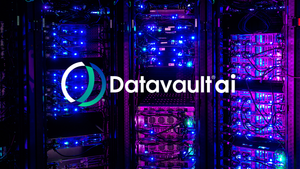The global technological landscape is on the cusp of a profound transformation, driven by groundbreaking innovations in energy-efficient semiconductors. As the demand for computational power, particularly for artificial intelligence (AI) applications, continues to skyrocket, the environmental footprint of our digital world has become an increasingly critical concern. A new wave of material discoveries, most notably in organic semiconductors for solar energy and advanced perovskites, is now paving the way for sustainable chip technologies that promise to revolutionize everything from consumer electronics to large-scale data centers. These advancements are not merely incremental improvements; they represent a fundamental shift towards a greener, more sustainable future for computing, offering unprecedented efficiency, flexibility, and reduced environmental impact.
This paradigm shift is set to redefine how we power our devices and process information, moving beyond the traditional limitations of silicon-based technologies. The immediate significance of these breakthroughs is immense, promising to accelerate the adoption of renewable energy, reduce manufacturing costs, and unlock novel applications previously unimaginable. From transparent solar panels integrated into building facades to flexible, wearable electronics and significantly more efficient AI hardware, these material innovations are poised to usher in an era where high-performance computing coexists harmoniously with environmental responsibility.
Technical Revolution: Unpacking the Innovations in Sustainable Chip Materials
The core of this revolution lies in the sophisticated development and application of novel semiconductor materials, primarily organic photovoltaics (OPVs) and perovskite solar cells, alongside other advancements like gallium nitride (GaN) and silicon carbide (SiC). These materials are challenging silicon's decades-long dominance by offering superior energy conversion, flexibility, and manufacturing advantages, directly contributing to more sustainable chip technologies.
Organic semiconductors, composed of carbon-based molecules, stand out for their inherent flexibility, lightweight nature, and significantly lower production costs. Recent breakthroughs have dramatically improved their efficiency and durability, addressing past limitations. Researchers at Åbo Akademi University, for instance, have achieved over 18% efficiency for 1 cm² inverted organic solar cells, coupled with an astonishing operational life of 24,700 hours (over 16 years of predicted use) under continuous white light. This was accomplished by identifying and mitigating a previously unknown loss mechanism at the bottom contact, introducing a thin passivation layer of silicon oxide nitrate (SiOxNy). Another significant advancement is the development of Non-Fullerene Acceptors (NFAs), which have pushed OPV efficiencies closer to the 20% mark. Furthermore, the discovery that an organic radical semiconductor molecule (P3TTM) can exhibit Mott-Hubbard physics, a quantum mechanical behavior typically seen in inorganic metal oxides, opens doors for lightweight, cost-effective solar panels made entirely from a single organic material. These materials are Earth-abundant and can be processed using solution-based methods like inkjet printing, dramatically reducing energy consumption and raw material waste compared to conventional silicon manufacturing.
Perovskite solar cells, another rapidly evolving material class, have demonstrated a remarkable ascent in efficiency since their inception in 2009. By 2025, single-junction perovskite cells have reached efficiencies exceeding 26%, with perovskite-silicon tandem cells achieving nearly 34% on small-area devices. Key technical advancements include the use of 2D/3D perovskite layers, which boost efficiency and stability (some experiments yielding 24.7%), and the implementation of dual-molecule solutions to overcome surface and interface recombination losses, leading to certified efficiencies of 25.1%. The ability of perovskites to be stacked on silicon to create tandem cells is particularly significant, as it allows for the utilization of different parts of the light spectrum, leading to theoretically much higher combined efficiencies. These materials offer high performance with lower production costs, making them highly competitive with traditional silicon.
Initial reactions from the AI research community and industry experts are overwhelmingly positive. The promise of significantly lower power consumption for AI accelerators and edge computing devices, coupled with reduced environmental impact, is seen as a critical enabler for the next generation of AI. Experts highlight that these material innovations are not just about making existing chips better, but about fundamentally changing the design principles of future AI hardware, allowing for more distributed, flexible, and sustainable AI deployments. The ability to integrate power generation directly into devices or surfaces using flexible organic solar cells is particularly exciting for ubiquitous AI applications.
Strategic Implications for AI and Tech Giants
The advent of energy-efficient semiconductors, particularly organic and perovskite-based technologies, carries profound strategic implications for AI companies, tech giants, and startups alike. This shift is poised to redefine competitive landscapes and create new market opportunities.
Companies heavily invested in AI hardware and infrastructure, such as NVIDIA (NASDAQ: NVDA), Intel (NASDAQ: INTC), and AMD (NASDAQ: AMD), stand to benefit immensely from these developments. While their core business remains largely silicon-based, the integration of more efficient power delivery and cooling solutions, potentially enabled by these new materials, can significantly enhance the performance-per-watt of their AI accelerators and CPUs. Furthermore, these companies may explore partnerships or acquisitions to incorporate organic or perovskite-based power solutions directly into their chip packages or as external power sources for edge AI devices, reducing reliance on traditional grid power and improving deployment flexibility. Startups specializing in novel semiconductor materials, like Oxford PV (a leader in perovskite tandem solar cells) or those focusing on organic electronics, are likely to see increased investment and strategic interest from larger tech players looking to secure intellectual property and manufacturing capabilities.
The competitive implications are significant. Tech giants like Google (NASDAQ: GOOGL), Amazon (NASDAQ: AMZN), and Microsoft (NASDAQ: MSFT), with their vast cloud computing infrastructure and AI research initiatives, face immense pressure to reduce the energy consumption of their data centers. Adopting more energy-efficient power electronics (e.g., GaN and SiC) and potentially integrating organic solar cells for on-site power generation could provide a substantial competitive advantage in terms of operational cost reduction and meeting sustainability goals. This could disrupt existing energy procurement strategies and lead to a more distributed energy model for data centers. For companies developing edge AI devices, the flexibility and low-power characteristics of organic semiconductors are a game-changer, enabling new product categories such as self-powered sensors, flexible displays, and wearable AI assistants that require minimal external power.
Market positioning will increasingly hinge on a company's commitment to and adoption of sustainable technologies. Companies that can demonstrate a clear path to reducing the environmental impact of their AI products and services, through the use of these new materials, will gain a strategic advantage in attracting environmentally conscious consumers and enterprises. This could lead to a 'green premium' for AI solutions built on sustainable hardware, fostering innovation in both material science and AI architecture to maximize energy efficiency. The potential disruption to existing power management solutions and even the form factor of electronic devices is considerable, pushing companies to adapt quickly to these evolving material science frontiers.
A Broader Canvas: AI's Sustainable Future
These innovations in energy-efficient semiconductors are not isolated technical feats; they are integral to a broader, transformative shift within the AI landscape and the tech industry at large. This movement towards sustainable computing aligns perfectly with global trends emphasizing environmental responsibility, resource efficiency, and the decentralization of technology.
The integration of organic semiconductors and perovskites into AI hardware directly addresses one of the most pressing concerns surrounding the rapid expansion of AI: its escalating energy consumption. Training large language models and running complex AI algorithms demand immense computational power, leading to significant energy footprints for data centers. By enabling more efficient power conversion, lower operational temperatures, and even on-device energy harvesting, these new materials offer a tangible pathway to greener AI. This fits into the broader trend of 'Green AI,' which seeks to minimize the environmental impact of AI systems throughout their lifecycle. Compared to previous AI milestones focused primarily on algorithmic breakthroughs or computational scale, this development represents a fundamental shift towards the underlying physical infrastructure, making AI itself more sustainable.
The impacts extend beyond mere energy savings. The ability to create flexible, transparent, and lightweight solar cells from organic materials opens up unprecedented design possibilities. Imagine AI-powered sensors embedded seamlessly into building windows, drawing power from ambient light, or wearable AI devices that recharge passively on the go. This could lead to a proliferation of 'ubiquitous AI' where intelligence is integrated into every surface and object, without the need for cumbersome power cables or frequent battery replacements. Potential concerns, however, include the scalability of manufacturing for these new materials, ensuring their long-term stability and performance under diverse environmental conditions, and the establishment of robust recycling infrastructures for these novel compounds to truly close the loop on sustainability.
This development can be compared to the transition from vacuum tubes to transistors in computing history, albeit with an environmental lens. Just as transistors miniaturized and revolutionized electronics, these new materials are poised to 'greenify' and democratize energy generation for electronics, fundamentally altering how AI systems are powered and deployed. It marks a crucial step in ensuring that AI's immense potential can be realized without overburdening our planet's resources.
The Horizon: Future Developments and Expert Predictions
The trajectory of energy-efficient semiconductors, particularly organic and perovskite technologies, points towards a future brimming with innovation, new applications, and continued refinement. Experts predict a rapid acceleration in both research and commercialization in the coming years.
In the near-term, we can expect continued efficiency gains and stability improvements for both organic and perovskite solar cells. Research will likely focus on scaling up manufacturing processes, moving from laboratory-scale devices to larger, commercially viable panels. Hybrid approaches, combining the best aspects of different materials, such as organic-perovskite tandem cells, are also on the horizon, aiming to achieve even higher efficiencies by capturing a broader spectrum of light. The integration of these materials into power electronics, replacing traditional silicon in specific high-power, high-frequency applications, will also become more prevalent, particularly in electric vehicles and renewable energy grid infrastructure.
Long-term developments include the widespread adoption of transparent and flexible organic solar cells for building-integrated photovoltaics (BIPV), smart windows, and even self-powered smart textiles. This will enable a truly distributed energy generation model, where every surface becomes a potential power source. For AI, this means the proliferation of ultra-low-power edge AI devices that can operate autonomously for extended periods, drawing power from their immediate environment. Challenges that need to be addressed include further reducing the toxicity of some perovskite components (though lead-free alternatives are being developed), optimizing material degradation mechanisms, and establishing global standards for manufacturing and recycling these novel semiconductors.
Experts predict that the convergence of advanced material science with AI will lead to self-optimizing energy systems and AI hardware that can dynamically adjust its power consumption based on available energy and computational load. The development of neuromorphic chips using these sustainable materials could further blur the lines between computing and energy harvesting, creating truly bio-inspired, energy-autonomous AI systems. What experts predict next is a race to market for companies that can effectively scale these technologies, integrate them into existing tech ecosystems, and demonstrate clear environmental and economic benefits, fundamentally reshaping the global energy and technology landscape.
A Sustainable Dawn for AI: The Path Forward
The breakthroughs in energy-efficient semiconductors, particularly the advancements in organic semiconductors for solar energy and high-efficiency perovskites, mark a pivotal moment in the history of technology and artificial intelligence. The key takeaways are clear: we are moving beyond silicon's constraints, embracing materials that offer not only superior performance in specific applications but also a drastically reduced environmental footprint. These innovations promise to democratize energy generation, enable novel device form factors, and fundamentally greenify the burgeoning field of AI.
This development's significance in AI history cannot be overstated. It represents a critical shift from solely focusing on algorithmic prowess and raw computational power to prioritizing the sustainability and energy efficiency of the underlying hardware. Without these material advancements, the long-term scalability and societal acceptance of ubiquitous AI would face formidable environmental barriers. By providing pathways to lower energy consumption, reduced manufacturing impact, and flexible power solutions, these new semiconductors are enabling AI to reach its full potential responsibly.
Looking ahead, the coming weeks and months will be crucial. We should watch for further announcements regarding efficiency records, especially in tandem cell architectures, and significant investments from major tech companies in startups specializing in these materials. The focus will also shift towards pilot projects demonstrating the real-world application and durability of these technologies in demanding environments, such as large-scale solar farms, smart city infrastructure, and next-generation AI data centers. The journey towards truly sustainable AI is well underway, and these material innovations are lighting the path forward.
This content is intended for informational purposes only and represents analysis of current AI developments.
TokenRing AI delivers enterprise-grade solutions for multi-agent AI workflow orchestration, AI-powered development tools, and seamless remote collaboration platforms.
For more information, visit https://www.tokenring.ai/.


















